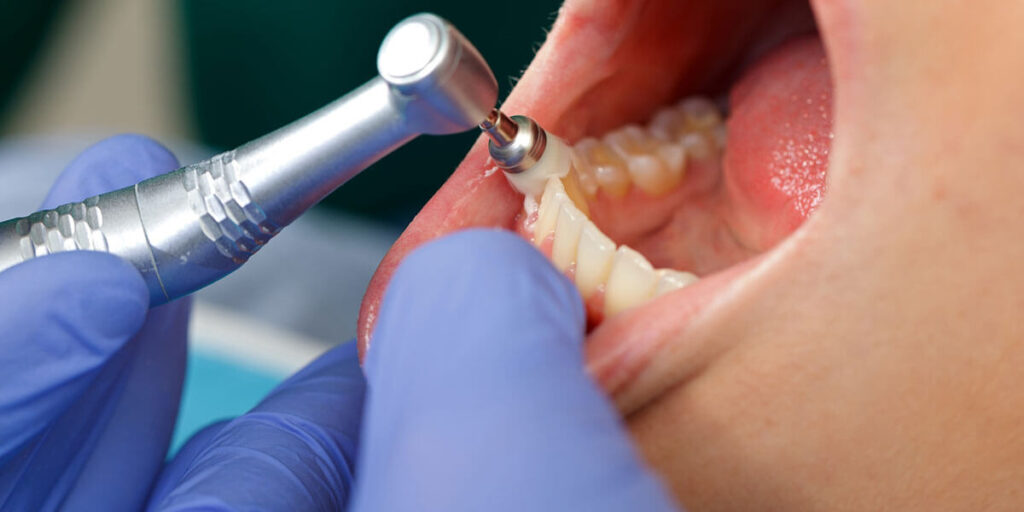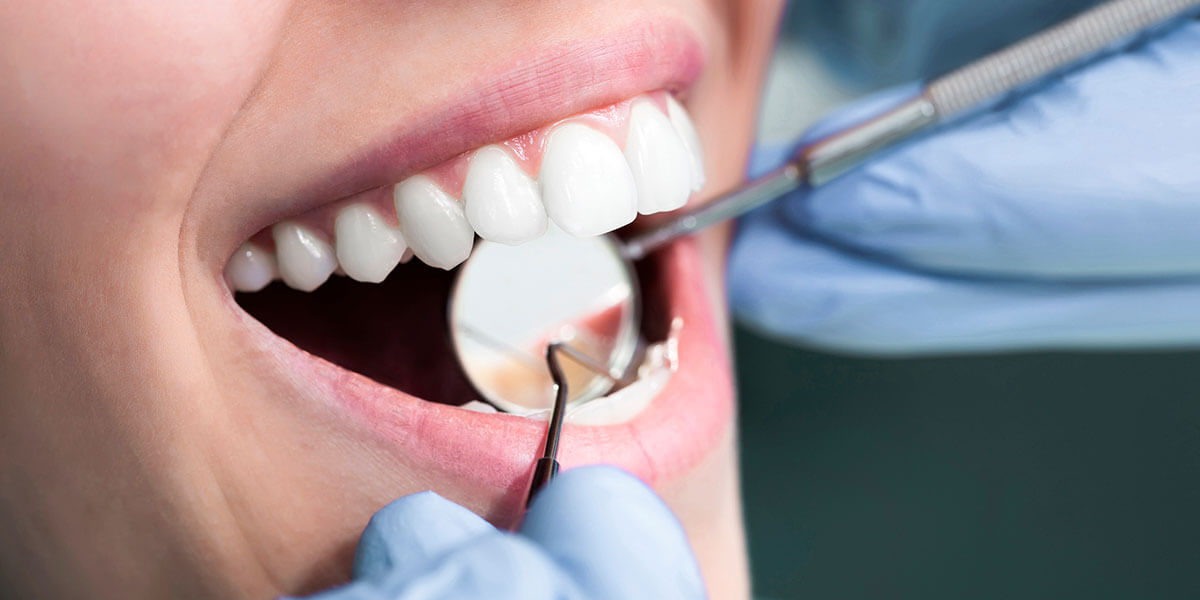An ultrasonic scaler is a dental instrument used to remove plaque, calculus, and stains from teeth. It uses ultrasonic vibrations to break up and remove deposits from the surface of the teeth. Ultrasonic scalers are commonly used in dental offices to help maintain good oral hygiene and prevent gum disease. They are also used to prepare teeth for restorative procedures such as fillings and crowns. Ultrasonic scalers are safe, effective, and relatively painless. They can help to reduce the amount of time spent in the dental chair and can help to improve the overall health of the teeth and gums.
The Benefits of Using an Ultrasonic Scaler for Dental Hygiene
Ultrasonic scalers are an important tool for dental hygiene professionals. They are used to remove plaque, calculus, and stains from teeth, and can help to improve the overall health of a patient’s mouth. Ultrasonic scalers are a safe and effective way to clean teeth, and they offer a number of benefits over traditional hand scaling.
One of the main benefits of using an ultrasonic scaler is that it is much faster than hand scaling. Ultrasonic scalers use high-frequency vibrations to break up plaque and calculus, which can be removed quickly and efficiently. This means that dental hygiene appointments can be completed in a shorter amount of time, allowing for more patients to be seen in a day.
Another benefit of using an ultrasonic scaler is that it is more comfortable for the patient. The vibrations of the scaler are gentle and do not cause any discomfort. This makes it easier for the patient to relax during the procedure, which can help to reduce anxiety.
Ultrasonic scalers are also more precise than hand scaling. The vibrations of the scaler allow for more accurate removal of plaque and calculus, which can help to reduce the risk of gum disease and other oral health issues.

Finally, ultrasonic scalers are more hygienic than hand scaling. The scaler is designed to reduce the risk of cross-contamination, as it does not require the use of any instruments that come into contact with the patient’s mouth. This helps to ensure that the patient is receiving the highest level of care.
In conclusion, ultrasonic scalers are an important tool for dental hygiene professionals. They offer a number of benefits over traditional hand scaling, including speed, comfort, precision, and hygiene. For these reasons, ultrasonic scalers are an essential part of any dental hygiene practice.
How to Properly Clean and Maintain an Ultrasonic Scaler
Ultrasonic scalers are an important tool for dental professionals, as they are used to remove plaque and tartar from teeth. Properly cleaning and maintaining an ultrasonic scaler is essential for ensuring that it works correctly and safely. This article will provide instructions on how to properly clean and maintain an ultrasonic scaler.
Cleaning
Before cleaning the ultrasonic scaler, it is important to turn off the power and unplug the unit. Once the unit is unplugged, use a soft cloth to wipe down the outside of the unit. This will remove any dust or debris that has accumulated on the surface.
Next, use a soft brush to clean the handpiece and the tip of the scaler. Be sure to use a brush that is specifically designed for cleaning ultrasonic scalers. This will help to remove any debris that has built up on the handpiece and tip.
Once the handpiece and tip have been cleaned, use a soft cloth to wipe down the inside of the unit. This will help to remove any debris that has built up inside the unit.
Maintaining
To maintain the ultrasonic scaler, it is important to regularly check the handpiece and tip for any signs of wear or damage. If any damage is found, it is important to replace the handpiece or tip immediately.
It is also important to regularly check the power cord for any signs of wear or damage. If any damage is found, it is important to replace the power cord immediately.
Finally, it is important to regularly check the water lines for any signs of wear or damage. If any damage is found, it is important to replace the water lines immediately.
By following these instructions, you can ensure that your ultrasonic scaler is properly cleaned and maintained. This will help to ensure that your ultrasonic scaler works correctly and safely.

The Latest Innovations in Ultrasonic Scaler Technology
Ultrasonic scalers are an essential tool for dental professionals, providing a safe and effective way to remove plaque and tartar from teeth. In recent years, advances in technology have led to the development of new and improved ultrasonic scalers that offer a range of features and benefits.
One of the most significant innovations in ultrasonic scaler technology is the introduction of piezoelectric scalers. These scalers use a piezoelectric crystal to generate ultrasonic vibrations, which are then used to break down plaque and tartar. This type of scaler is more efficient than traditional magnetostrictive scalers, as it produces a higher frequency of vibrations and is less likely to cause damage to the teeth.
Another recent development is the use of LED lights in ultrasonic scalers. These lights are used to illuminate the area being treated, making it easier for the dentist to identify and remove plaque and tartar. This feature is especially useful for treating hard-to-reach areas, such as between the teeth.
In addition, some ultrasonic scalers now come with a range of interchangeable tips. These tips can be used to target specific areas of the mouth, allowing the dentist to customize the treatment for each patient. This is especially useful for treating patients with periodontal disease, as it allows the dentist to target the areas of the mouth that are most affected.
Finally, some ultrasonic scalers now come with a range of safety features. These features include an auto-shutoff function, which prevents the scaler from running for too long, and a low-noise mode, which reduces the noise generated by the scaler. These features help to ensure that the treatment is as safe and comfortable as possible for the patient.
Overall, the latest innovations in ultrasonic scaler technology have made it easier and more efficient for dental professionals to provide effective and safe treatments for their patients. With these new features, dentists can now provide more targeted and customized treatments, while also ensuring the safety and comfort of their patients.
The Pros and Cons of Different Types of Ultrasonic Scalers
Ultrasonic scalers are a type of dental instrument used to remove plaque and tartar from teeth. They use high-frequency sound waves to break up and remove deposits from the surface of the teeth. Ultrasonic scalers are a popular choice for dental professionals because they are fast, efficient, and relatively easy to use. However, there are different types of ultrasonic scalers available, each with its own set of pros and cons.
The first type of ultrasonic scaler is the magnetostrictive scaler. This type of scaler uses a magnetostrictive transducer to generate sound waves. The advantage of this type of scaler is that it is very precise and can be used to target specific areas of the teeth. It is also relatively quiet and can be used in a variety of settings. The downside of this type of scaler is that it is more expensive than other types of scalers and can be difficult to use for inexperienced operators.
The second type of ultrasonic scaler is the piezoelectric scaler. This type of scaler uses a piezoelectric crystal to generate sound waves. The advantage of this type of scaler is that it is relatively inexpensive and easy to use. It is also relatively quiet and can be used in a variety of settings. The downside of this type of scaler is that it is not as precise as the magnetostrictive scaler and can be difficult to use for inexperienced operators.
The third type of ultrasonic scaler is the air-polishing scaler. This type of scaler uses a combination of air and water to generate sound waves. The advantage of this type of scaler is that it is relatively quiet and can be used in a variety of settings. The downside of this type of scaler is that it is not as precise as the other types of scalers and can be difficult to use for inexperienced operators.
In conclusion, there are different types of ultrasonic scalers available, each with its own set of pros and cons. It is important to consider the advantages and disadvantages of each type of scaler before making a decision. Ultimately, the best type of scaler for a particular situation will depend on the individual needs of the dental professional.
Understanding the Different Ultrasonic Scaler Tips and Their Uses
Ultrasonic scalers are a type of dental instrument used to remove plaque, calculus, and stains from teeth. They use ultrasonic vibrations to break up and remove deposits from the surface of the teeth. Ultrasonic scalers come with a variety of tips that are designed for different purposes. Understanding the different types of tips and their uses is essential for providing effective dental care.
The most common type of ultrasonic scaler tip is the flat tip. This tip is used for general scaling and debridement of the teeth. It is designed to remove plaque, calculus, and stains from the surface of the teeth. It is also used to remove tartar from the gum line.
The cup tip is another type of ultrasonic scaler tip. This tip is designed to remove calculus from the root surfaces of the teeth. It is also used to remove plaque and stains from the root surfaces.
The chisel tip is a type of ultrasonic scaler tip that is used to remove large deposits of calculus from the teeth. It is designed to penetrate deep into the grooves and crevices of the teeth to remove stubborn deposits.
The perio tip is a type of ultrasonic scaler tip that is used to remove plaque and calculus from the periodontal pockets. It is designed to reach deep into the pockets to remove deposits that are difficult to access with other types of tips.
The endo tip is a type of ultrasonic scaler tip that is used to remove calculus and plaque from the root canals of the teeth. It is designed to reach deep into the root canals to remove deposits that are difficult to access with other types of tips.
The implant tip is a type of ultrasonic scaler tip that is used to remove calculus and plaque from the surfaces of dental implants. It is designed to reach deep into the grooves and crevices of the implants to remove deposits that are difficult to access with other types of tips.
Understanding the different types of ultrasonic S tips and their uses is essential for providing effective dental care. Each type of tip is designed for a specific purpose and should be used accordingly. By using the correct tip for the job, dental professionals can ensure that their patients receive the best possible care.
Conclusion
The Ultrasonic Scaler is a powerful and effective tool for dental professionals. It is a safe and efficient way to remove plaque and tartar from teeth, and it can help to reduce the risk of gum disease and other dental problems. It is also a cost-effective solution for dental practices, as it requires minimal maintenance and can be used for a variety of procedures. ultrasonic S are an invaluable tool for dental professionals, and they can help to improve the overall health of patients.




